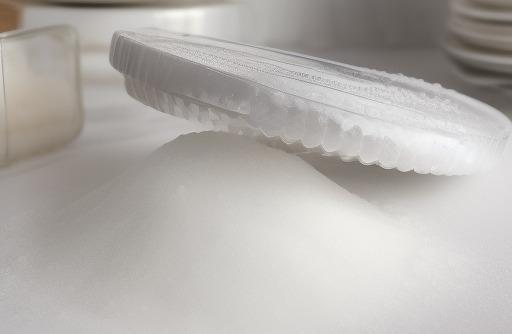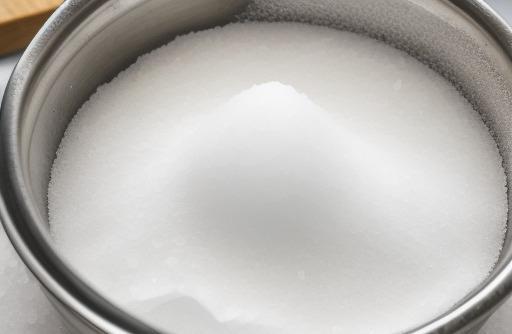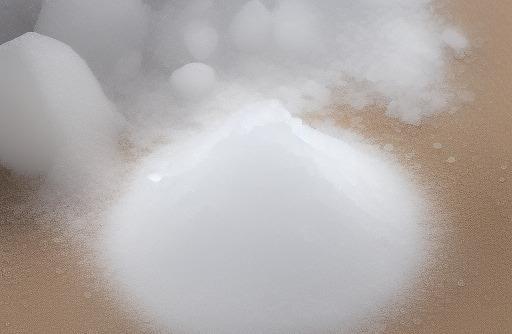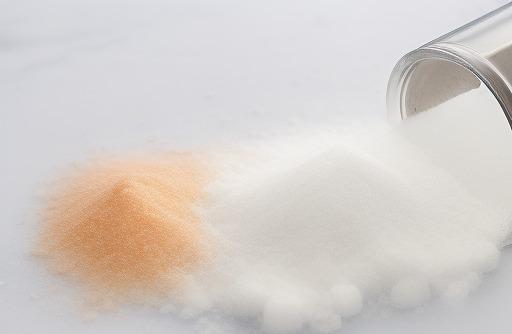- You are here:
- Home »
- Food Substitutes
- » Best Substitutes For Salt
Best Substitutes For Salt

Salt is a common ingredient that is used to enhance the flavor of various dishes. While it may be a popular seasoning, it is also known to have negative effects on our health when consumed in excess. The high sodium content in salt has been linked to an increased risk of high blood pressure, heart disease, and stroke. Therefore, finding suitable substitutes for salt becomes crucial for individuals who want to reduce their sodium intake but still want to enjoy flavorful meals.
In this article, we will explore various substitutes for salt that can be used to enhance the taste of your dishes without compromising your health.
Key Takeaways
- Salt is commonly used as a seasoning to enhance the flavor of dishes.
- High sodium intake can have negative effects on your health.
- Substitutes for salt can help reduce sodium intake while still providing flavor.
- There are various types of substitutes for salt, including herbs, spices, and alternative seasonings.
- Consider your personal preferences and dietary restrictions when choosing a substitute for salt.
Why You Need A Substitute For Salt
Reducing your salt intake can have significant health benefits. The American Heart Association recommends limiting sodium intake to no more than 2,300 milligrams (mg) per day for most adults, and an ideal limit of 1,500 mg per day for individuals with specific health conditions like high blood pressure.
Excess sodium intake can lead to a variety of health problems, including:
-
High Blood Pressure: Consuming too much salt can increase blood pressure, putting strain on the heart and increasing the risk of heart disease and stroke.
-
Cardiovascular Disease: A high sodium diet has been linked to an increased risk of cardiovascular diseases such as heart attacks and heart failure.
-
Kidney Disease: Consuming excess salt can put strain on the kidneys, which may contribute to the development or progression of kidney disease.
-
Water Retention: High sodium intake can cause your body to retain excess water, leading to bloating and swelling.
By using substitutes for salt in your cooking, you can lower your sodium intake and reduce the risk of these health problems.
Types Of Substitutes For Salt

There are various types of substitutes for salt that can be used to enhance the flavor of your dishes. These include:
-
Herbs: Fresh or dried herbs can add depth and flavor to your meals without adding salt. Some commonly used herbs include basil, oregano, thyme, rosemary, and cilantro.
-
Spices: Spices not only add flavor but also bring unique aromas to your dishes. Popular spice options include cumin, paprika, turmeric, cinnamon, and ginger.
-
Acidic Ingredients: Vinegar, lemon juice, lime juice, and other acidic ingredients can lend tartness and tang to your dishes, reducing the need for salt.
-
Seaweed: Seaweed, such as kelp or dulse, contains a naturally salty flavor and can be used as a salt substitute in various dishes.
-
Salt Substitutes: There are also commercially available salt substitutes that are specifically formulated to mimic the taste of salt without the sodium content. These often contain potassium chloride or other minerals instead of sodium chloride.
Choosing the right substitute for salt depends on your personal taste preferences and dietary restrictions. Experimenting with different options can help you discover which substitutes work best for your cooking style.
Best Substitutes For Salt

-
Herbs and Spices: Herbs and spices are excellent salt substitutes as they add flavor and depth to your dishes. Some specific herbs and spices that work well as salt alternatives include:
-
Basil: Adds a sweet and earthy flavor to dishes like pasta sauces, soups, and salads.
-
Oregano: Commonly used in Italian and Mediterranean cuisine, oregano brings a savory and slightly bitter taste to pizzas, grilled veggies, and meat dishes.
-
Thyme: Offers a subtle and refreshing flavor, perfect for roasted vegetables, poultry, and stews.
-
Rosemary: Aromatic and piney, rosemary complements roasted meats, potatoes, and bread.
-
Cilantro: Adds a bright and citrus-like flavor, ideal for salsa, guacamole, and Asian-inspired dishes.
-
Cumin: Brings a warm and earthy flavor to Mexican, Indian, and Middle Eastern dishes.
-
Paprika: Offers a mild heat, vibrant color, and smoky flavor, commonly used in stews, rubs, and marinades.
-
Turmeric: Known for its vibrant yellow color and earthy taste, turmeric is a staple in many curry dishes, soups, and rice recipes.
-
Ginger: Brings a warm and spicy flavor to stir-fries, marinades, and baked goods.
-
-
Acidic Ingredients: Acidic ingredients like vinegar, lemon juice, and lime juice can provide a tangy taste to your meals without the need for salt. Use them in dressings, marinades, and sauces to add a refreshing zing.
-
Seaweed: Seaweed, such as kelp and dulse, have natural saltiness due to their mineral content. They can be added to salads, soups, or used as a seasoning for a subtle oceanic flavor.
-
Salt Substitutes: Salt substitutes are an option for those who desire the taste of salt without the added sodium. These substitutes often contain potassium chloride, which provides a similar taste profile. Keep in mind that individuals with kidney problems or taking certain medications should consult their healthcare provider before using salt substitutes.
It’s important to note that while these substitutes can add flavor, they may not exactly replicate the taste of salt. But with experimentation, you can find a combination that works best for you.
Choosing The Right Substitute For Salt

When selecting a substitute for salt, it’s essential to consider your personal taste preferences, dietary restrictions, and the specific dish you are preparing. Here are some factors to consider:
-
Flavor Profile: Consider the flavor profile of the dish you are cooking and select a substitute that complements it. For example, if you are making a Mexican dish, cumin or chili powder can provide a savory and spicy kick.
-
Allergies and Dietary Restrictions: If you have any allergies or dietary restrictions, make sure the substitute you choose is suitable. For example, if you are avoiding gluten, be mindful of spice blends that may contain hidden gluten ingredients.
-
Sodium Content: If you are specifically looking to reduce sodium intake, opt for substitutes that are low in sodium or sodium-free, such as herbs, spices, and certain acidic ingredients.
-
Food Pairings: Consider how well the substitute will pair with the other ingredients in your dish. For example, rosemary may work well with roasted meats, but it may not complement the flavors of a tropical fruit salad.
Ultimately, it may require some trial and error to find the best substitute for salt that suits your tastes and preferences. Don’t be afraid to experiment and adjust the quantities to achieve the desired flavor.
Pro Tip: When using herbs as a substitute for salt, it’s best to use fresh ones whenever possible. Fresh herbs have a more potent flavor than dried ones, so you may need less to achieve the desired taste. Remember to add them towards the end of cooking to retain their freshness.
Cooking With Substitutes For Salt

Using substitutes for salt in your cooking can be an exciting way to experiment with flavors and create healthier meals. Here are some tips for cooking with salt substitutes:
-
Start Slow: If you are new to using substitutes for salt, start by reducing the amount of salt in a recipe by half. Gradually decrease the amount until you find the right balance of flavors that suit your taste.
-
Enhance Flavors: Instead of relying solely on salt, experiment with different combinations of herbs, spices, and acidic ingredients to enhance the flavors of your dishes.
-
Use in Different Culinary Techniques: Substitutes for salt can be used in various culinary techniques such as marinating, seasoning, and finishing dishes. For example, use a blend of herbs and spices to create a flavorful marinade for meats or sprinkle herbs on top of a finished dish for a burst of freshness.
-
Balance the Taste: Some substitutes for salt may lend a specific flavor profile to your dishes. Ensure that the flavors are well-balanced by using contrasting or complementary ingredients. For instance, if a dish becomes too acidic, consider adding a touch of sweetness with a natural sweetener like honey or maple syrup.
-
Adjust Cooking Times: Some herbs and spices may release their flavors more slowly than salt. Adjust your cooking times accordingly to allow the flavors to develop and meld together.
Experimentation and creativity are key when cooking with substitutes for salt. Don’t be afraid to try new combinations to find your favorite flavor profiles.
Recipes Using Substitutes For Salt

-
Herb-Roasted Chicken
-
Ingredients:
- 1 whole chicken
- 2 tablespoons olive oil
- 1 tablespoon dried thyme
- 1 tablespoon dried rosemary
- 1 tablespoon dried sage
- 1 teaspoon garlic powder
- Freshly ground black pepper to taste
-
Instructions:
- Preheat the oven to 400°F (200°C).
- Rub the chicken with olive oil and place it in a baking dish.
- In a small bowl, mix together the dried thyme, rosemary, sage, garlic powder, and black pepper.
- Sprinkle the herb mixture evenly over the chicken, ensuring it covers all sides.
- Roast the chicken in the preheated oven for about 1 hour or until the internal temperature reaches 165°F (74°C).
- Let the chicken rest for 10 minutes before serving.
-
-
Roasted Vegetables with Balsamic Vinegar
-
Ingredients:
- Assorted vegetables (e.g., carrots, zucchini, bell peppers, onions)
- 2 tablespoons olive oil
- 2 tablespoons balsamic vinegar
- 1 teaspoon dried oregano
- 1 teaspoon dried basil
- Salt substitute and freshly ground black pepper to taste
-
Instructions:
- Preheat the oven to 400°F (200°C).
- Cut the vegetables into bite-sized pieces and place them in a mixing bowl.
- Drizzle olive oil and balsamic vinegar over the vegetables. Sprinkle dried oregano, dried basil, salt substitute, and black pepper.
- Toss the vegetables until evenly coated with the seasonings.
- Spread the vegetables in a single layer on a baking sheet.
- Roast the vegetables in the preheated oven for about 20-25 minutes or until they are tender and slightly caramelized.
- Serve as a side dish or on top of a salad.
-
Storage And Shelf Life Of Substitutes

The storage and shelf life of substitutes for salt vary depending on the type of substitute:
-
Herbs: Fresh herbs should be kept in a refrigerator, wrapped in a damp paper towel and stored in an airtight container or a plastic bag. They typically last up to one week. Dried herbs should be stored in a cool, dark place in airtight containers and can last up to one year.
-
Spices: Ground spices should be stored in a cool, dark place in airtight containers and have a shelf life of about 2-3 years. Whole spices have a longer shelf life and can last up to 4-5 years.
-
Acidic Ingredients: Vinegar, lemon juice, and lime juice can be stored in the refrigerator for several months. However, the flavor may diminish over time, so it’s best to use them while they are fresh.
-
Seaweed: Seaweed should be stored in a cool, dry place away from direct light. It can last up to one year if stored properly.
-
Salt Substitutes: Salt substitutes often come with specific storage instructions provided by the manufacturer. Follow the instructions on the packaging to ensure their effectiveness and shelf life.
To maintain the freshness and flavor of your substitutes, it’s important to store them properly and check their expiration dates regularly.
Conclusion
Reducing sodium intake can lead to improved health outcomes, and using substitutes for salt in your cooking can be an effective way to achieve this. By experimenting with herbs, spices, acidic ingredients, seaweed, and salt substitutes, you can enjoy flavorful meals while reducing your reliance on salt.
Remember to consider your taste preferences, dietary restrictions, and the dish you are preparing when choosing a substitute for salt. Start slow, adjust flavors to your liking, and have fun exploring new combinations of herbs and spices.
With the right substitutes for salt, you can elevate the taste of your dishes while prioritizing your health.
FAQS
What Are Some Common Substitutes For Table Salt?
Some common substitutes for table salt include kosher salt, sea salt, Himalayan pink salt, low-sodium salt, and salt-free seasoning blends.
How Can I Use Herbs And Spices As A Salt Substitute?
Herbs and spices can be used as a salt substitute by adding flavor to your meals. For example, try using garlic powder, onion powder, black pepper, paprika, or dried herbs such as rosemary, thyme, or oregano.
Is It Safe To Use Salt Substitutes If I Have High Blood Pressure?
It depends on the salt substitute. Some salt substitutes contain potassium chloride, which can be harmful for people with kidney problems or who take certain medications. Check with your doctor before using any salt substitutes.
How Can I Reduce My Salt Intake Without Sacrificing Flavor?
Use flavorful ingredients such as fresh herbs, citrus juice, vinegar, and low-sodium soy sauce to add flavor to your meals. You can also experiment with different spices and seasonings to find new flavor combinations.
Are There Any Downsides To Using Salt Substitutes?
Some people may find that salt substitutes have a bitter taste or an aftertaste. Additionally, some salt substitutes may still contain sodium, so it’s important to read the label carefully. Finally, some people may prefer the taste of regular salt and find that substitutes don’t taste as good.
Sources
About the Author Jenny
I'm Jenny, a housewife with an unwavering passion for food. My culinary journey began with my grandmother's kitchen, and it's now a full-fledged food blog. I've turned my love for cooking into a creative outlet, sharing recipes and stories with a global community of fellow food enthusiasts. It's proof that being a housewife can also mean pursuing your passions and savoring life's delectable moments.
